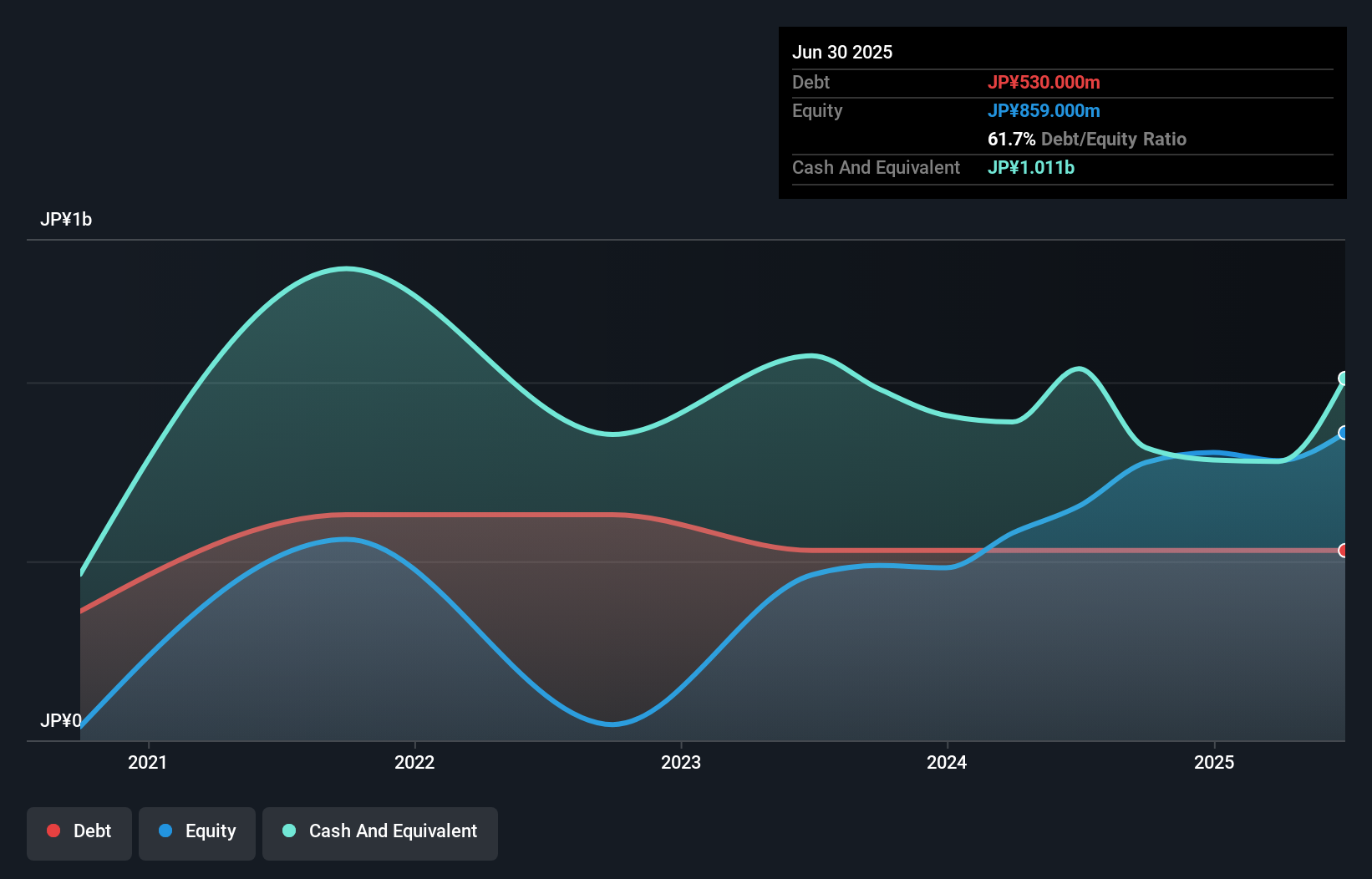Some say volatility, rather than debt, is the best way to think about risk as an investor, but Warren Buffett famously said that 'Volatility is far from synonymous with risk.' When we think about how risky a company is, we always like to look at its use of debt, since debt overload can lead to ruin. We can see that SmartDrive inc. (TSE:5137) does use debt in its business. But the real question is whether this debt is making the company risky.
Why Does Debt Bring Risk?
Debt is a tool to help businesses grow, but if a business is incapable of paying off its lenders, then it exists at their mercy. In the worst case scenario, a company can go bankrupt if it cannot pay its creditors. While that is not too common, we often do see indebted companies permanently diluting shareholders because lenders force them to raise capital at a distressed price. Of course, the upside of debt is that it often represents cheap capital, especially when it replaces dilution in a company with the ability to reinvest at high rates of return. The first step when considering a company's debt levels is to consider its cash and debt together.
What Is SmartDrive's Debt?
The chart below, which you can click on for greater detail, shows that SmartDrive had JP¥530.0m in debt in June 2025; about the same as the year before. But on the other hand it also has JP¥1.01b in cash, leading to a JP¥481.0m net cash position.

A Look At SmartDrive's Liabilities
According to the last reported balance sheet, SmartDrive had liabilities of JP¥823.0m due within 12 months, and liabilities of JP¥531.0m due beyond 12 months. Offsetting this, it had JP¥1.01b in cash and JP¥524.0m in receivables that were due within 12 months. So it actually has JP¥181.0m more liquid assets than total liabilities.
Having regard to SmartDrive's size, it seems that its liquid assets are well balanced with its total liabilities. So it's very unlikely that the JP¥19.4b company is short on cash, but still worth keeping an eye on the balance sheet. Simply put, the fact that SmartDrive has more cash than debt is arguably a good indication that it can manage its debt safely.
See our latest analysis for SmartDrive
In addition to that, we're happy to report that SmartDrive has boosted its EBIT by 89%, thus reducing the spectre of future debt repayments. When analysing debt levels, the balance sheet is the obvious place to start. But ultimately the future profitability of the business will decide if SmartDrive can strengthen its balance sheet over time. So if you want to see what the professionals think, you might find this free report on analyst profit forecasts to be interesting.
Finally, a company can only pay off debt with cold hard cash, not accounting profits. SmartDrive may have net cash on the balance sheet, but it is still interesting to look at how well the business converts its earnings before interest and tax (EBIT) to free cash flow, because that will influence both its need for, and its capacity to manage debt. Over the last two years, SmartDrive saw substantial negative free cash flow, in total. While investors are no doubt expecting a reversal of that situation in due course, it clearly does mean its use of debt is more risky.
Summing Up
While we empathize with investors who find debt concerning, you should keep in mind that SmartDrive has net cash of JP¥481.0m, as well as more liquid assets than liabilities. And we liked the look of last year's 89% year-on-year EBIT growth. So we are not troubled with SmartDrive's debt use. When analysing debt levels, the balance sheet is the obvious place to start. But ultimately, every company can contain risks that exist outside of the balance sheet. For example - SmartDrive has 1 warning sign we think you should be aware of.
When all is said and done, sometimes its easier to focus on companies that don't even need debt. Readers can access a list of growth stocks with zero net debt 100% free, right now.
New: Manage All Your Stock Portfolios in One Place
We've created the ultimate portfolio companion for stock investors, and it's free.
• Connect an unlimited number of Portfolios and see your total in one currency
• Be alerted to new Warning Signs or Risks via email or mobile
• Track the Fair Value of your stocks
Have feedback on this article? Concerned about the content? Get in touch with us directly. Alternatively, email editorial-team (at) simplywallst.com.
This article by Simply Wall St is general in nature. We provide commentary based on historical data and analyst forecasts only using an unbiased methodology and our articles are not intended to be financial advice. It does not constitute a recommendation to buy or sell any stock, and does not take account of your objectives, or your financial situation. We aim to bring you long-term focused analysis driven by fundamental data. Note that our analysis may not factor in the latest price-sensitive company announcements or qualitative material. Simply Wall St has no position in any stocks mentioned.
About TSE:5137
SmartDrive
Engages in the development of data platforms and services that support the evolution of mobility services in Japan.
Exceptional growth potential with outstanding track record.
Market Insights
Community Narratives




